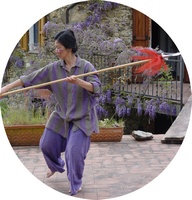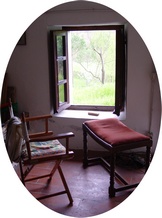
excerpt
The Art of Learning
This book will document some of my struggles. The pictures, also, will show my difficulties. When one sees a picture of a masterly position, it may have the effect of ‘closing the book’: what is shown appears so far out of reach that we leave excellence to the masters, rather than take on the challenging task of improving ourselves. Here we shall have the opportunity to see, examine and mull over some of the problems that actually arise in the course of ordinary practice.
My first seminar with Chen XiaoWang was in London in 1995 to learn LaoJia, the Chen family’s long form. On day 1, I was flummoxed by a bouleversemental adjustment which Chen XiaoWang made to my basic taiji position, standing on two feet a shoulder’s width apart, arms down by the sides, the position known by the splendid title, Initiation of the Grand Terminus. It was a small group, about ten people; for a few it was their second course with him, a couple were entirely new to taiji, one or two like me new to Chentaiji. As we stood there, thinking that we were about to do the very first move, he went around all of us, giving a couple of minutes to each person, gently nudging us into a better positioning for attempting to lift the arms.
The unfamiliar place that he put me in brought about an entirely new sensation of a movement that I had been doing for nearly two decades. I did not panic, although I could have done. But I was shocked. Caught by surprise at the very beginning, I felt that I could not remember ever having done any taiji (or even t’aichi) before.
Everyone else seemed to be able to keep it together. In those ten days I sought help from my fellow students, among whom were a policeman, a taxi-driver, taiji instructors. Whoever knew a segment of the form, with gratitude I followed. Someone tried to help by explaining how the Yang Style long form followed the general outline of the Chen form, but that was no help at all. The Wading Forwards, which I have already mentioned, is so different from the Brush Knee and Push Steps of Yang Style that I could not even remotely relate it to a general outline. Even when we got to the stepping backwards, Monkey Steps as Pytt had loved to call them, I could not recognize in them a movement that I had ever done before.
Like in a dream I went through the ten days with Chen XiaoWang, who meticulously taught the whole of LaoJia in three-hour stretches every evening. I had come to London specially for the seminars, and therefore had the rest of the daytime free. I slept. The learning was so intense that I dropped into a state where LaoJia happened in me day and night.
|
next |

